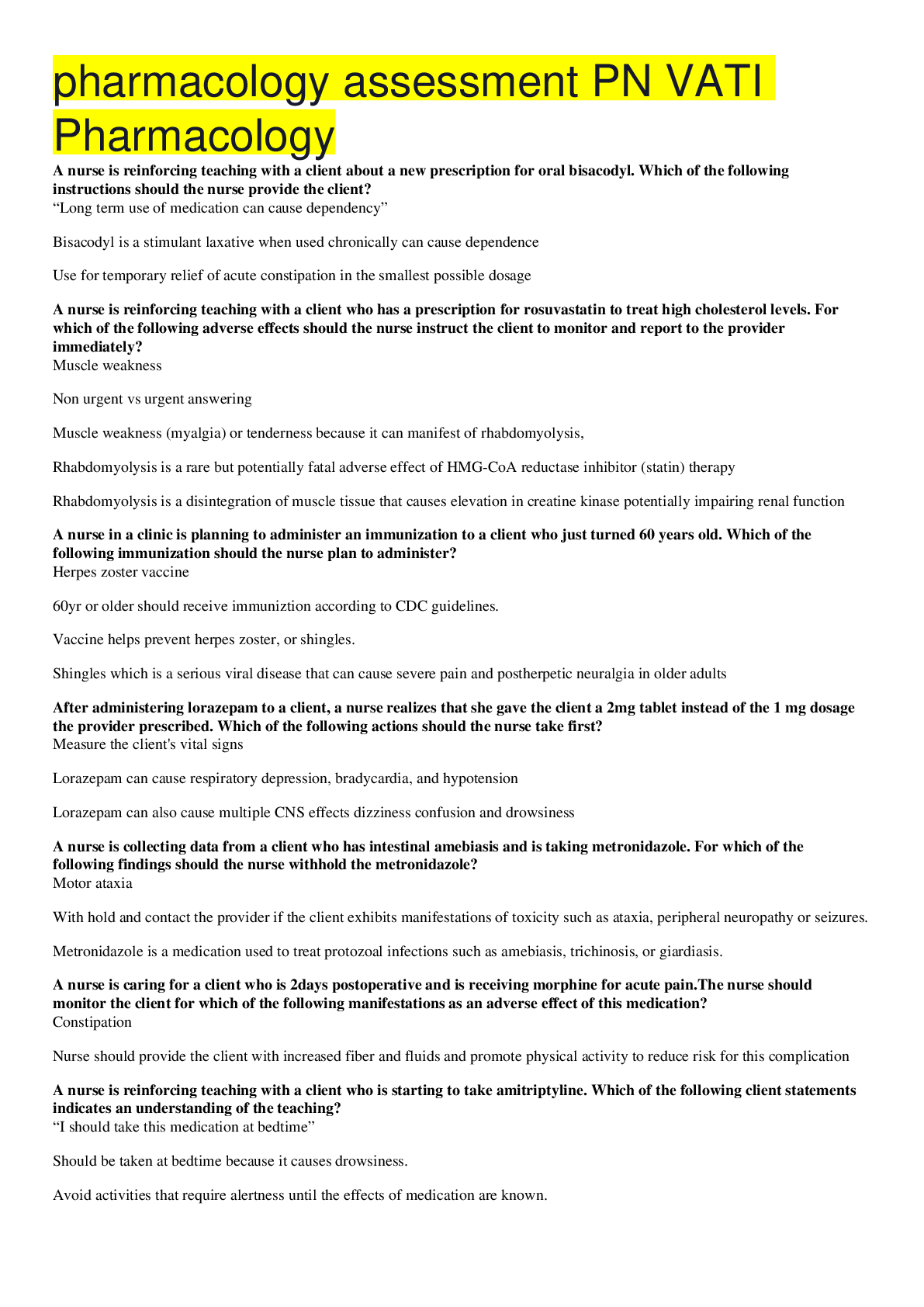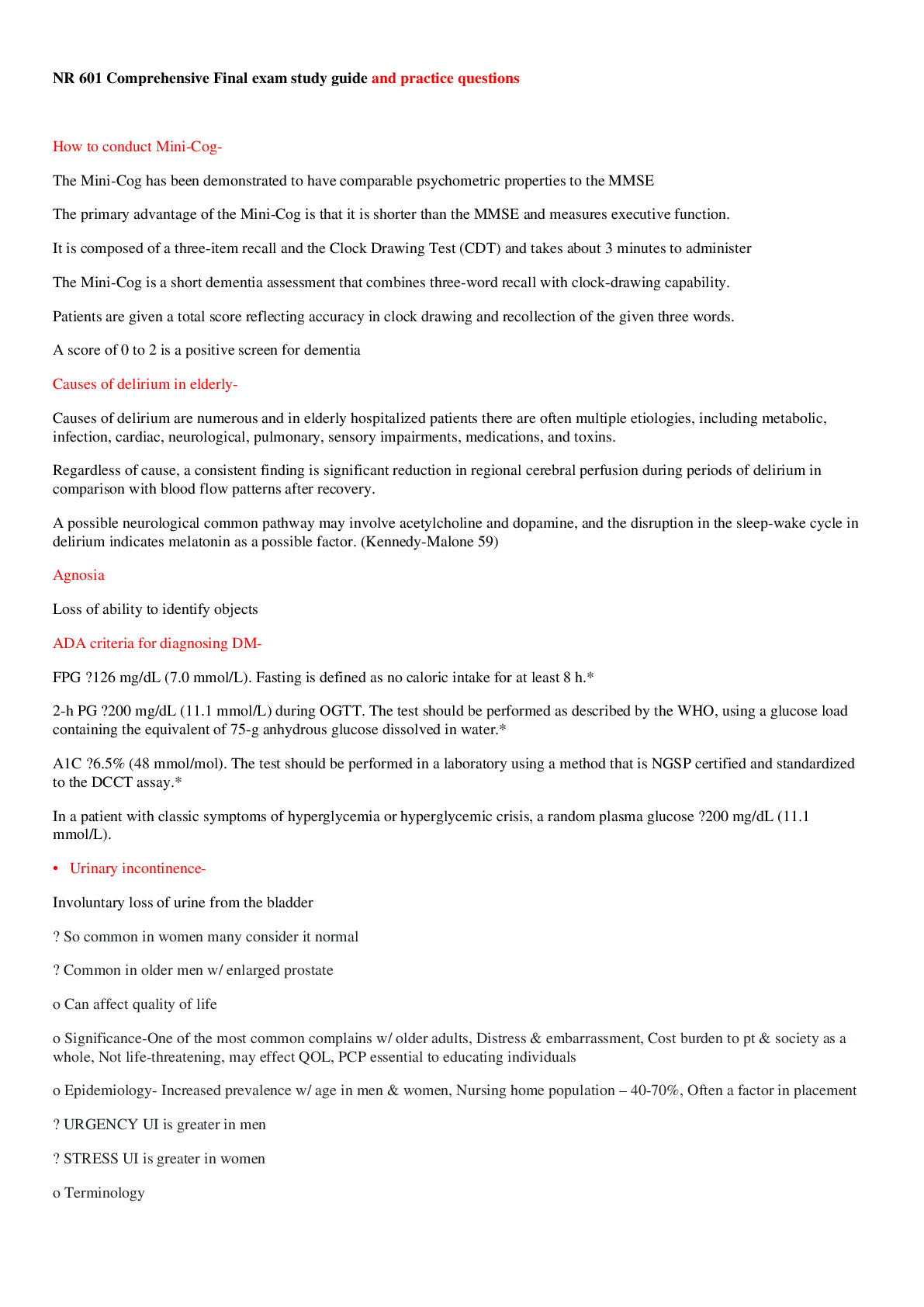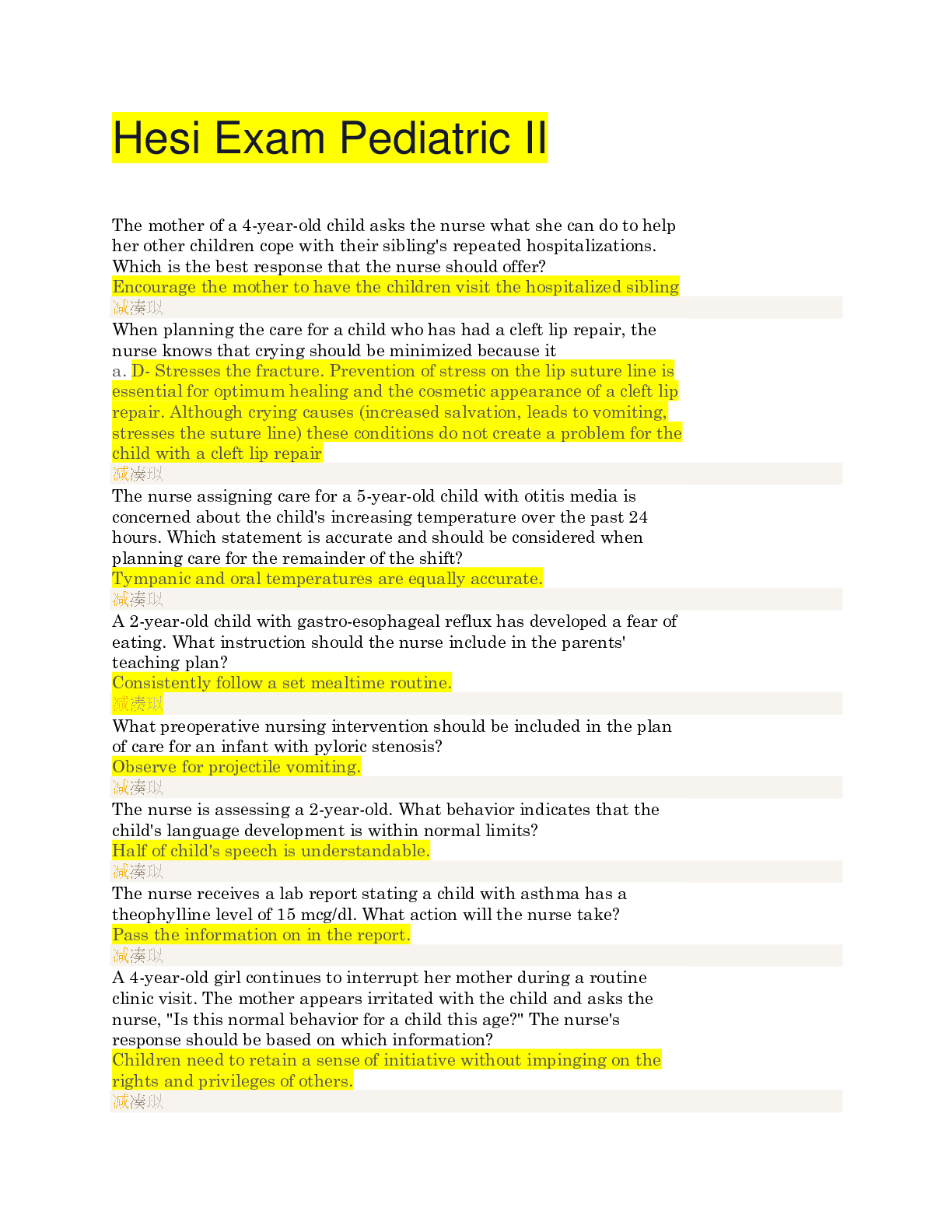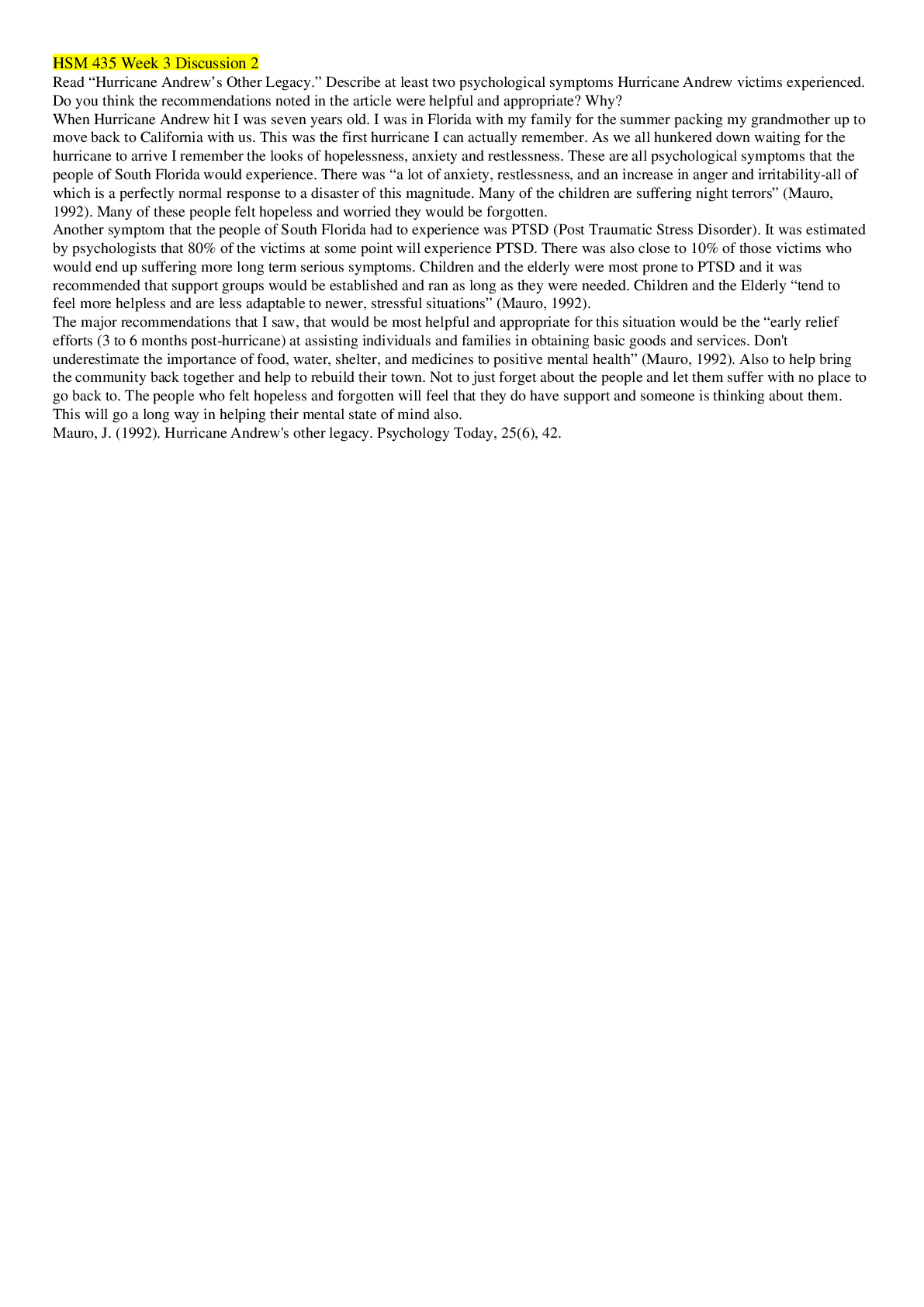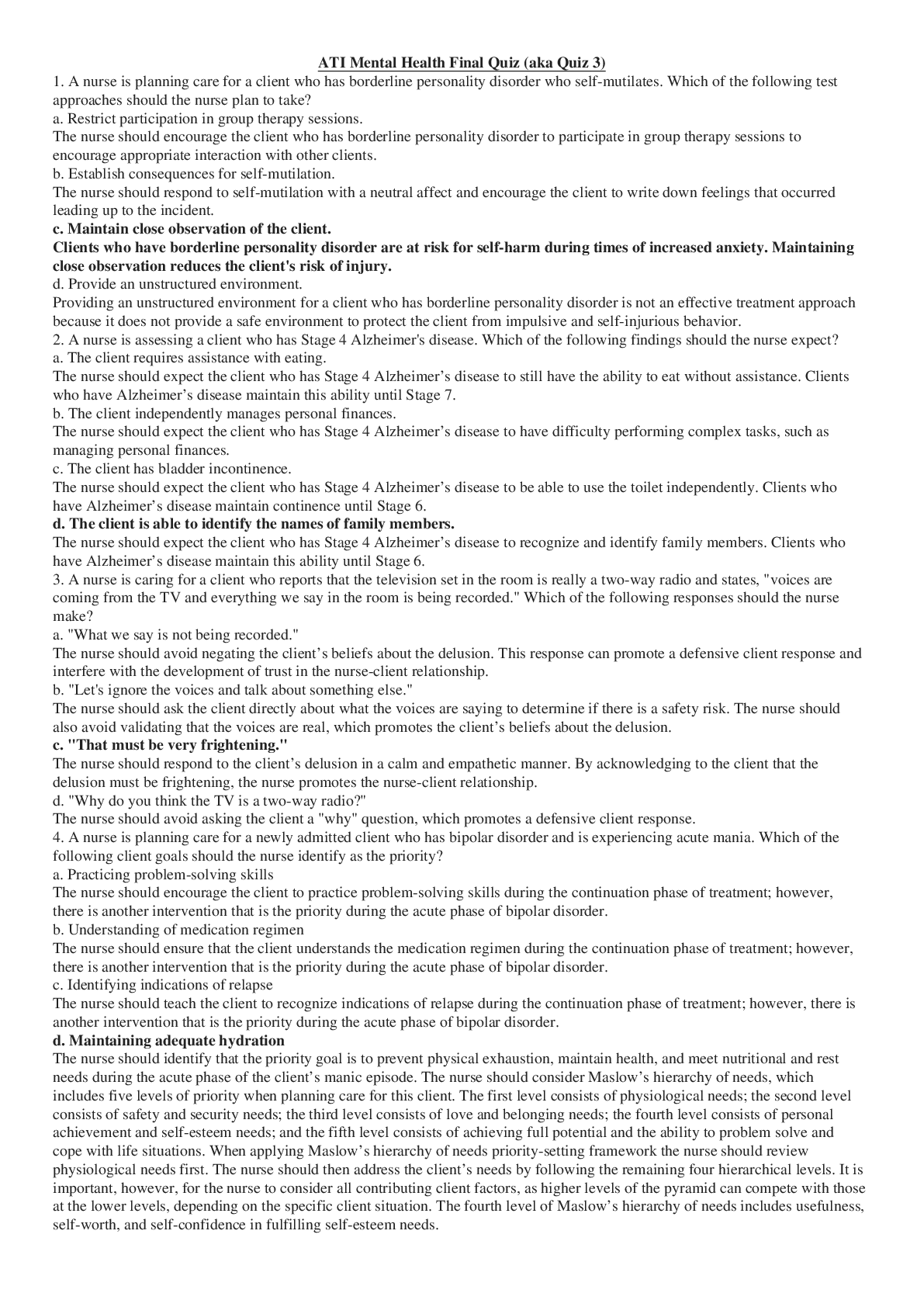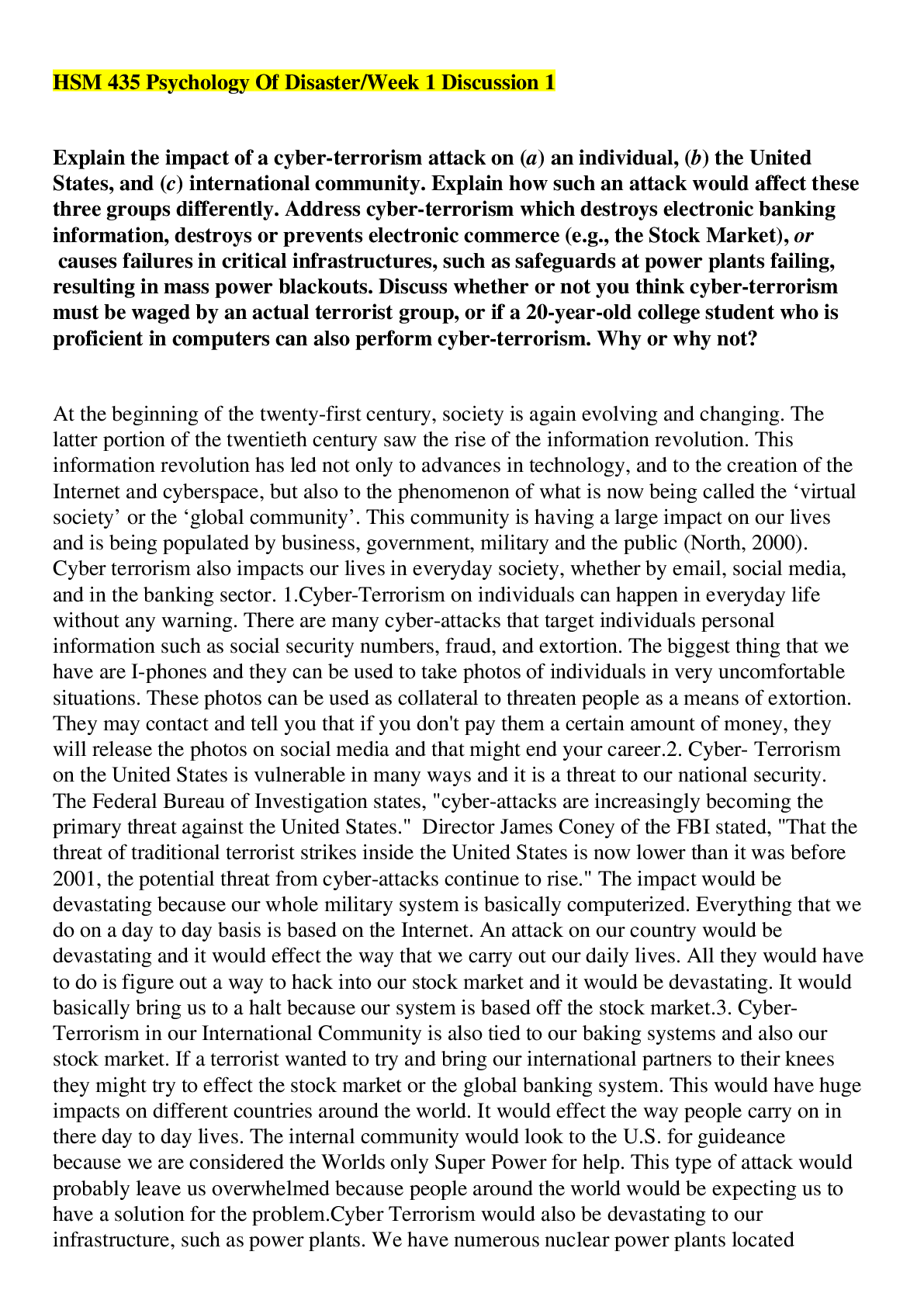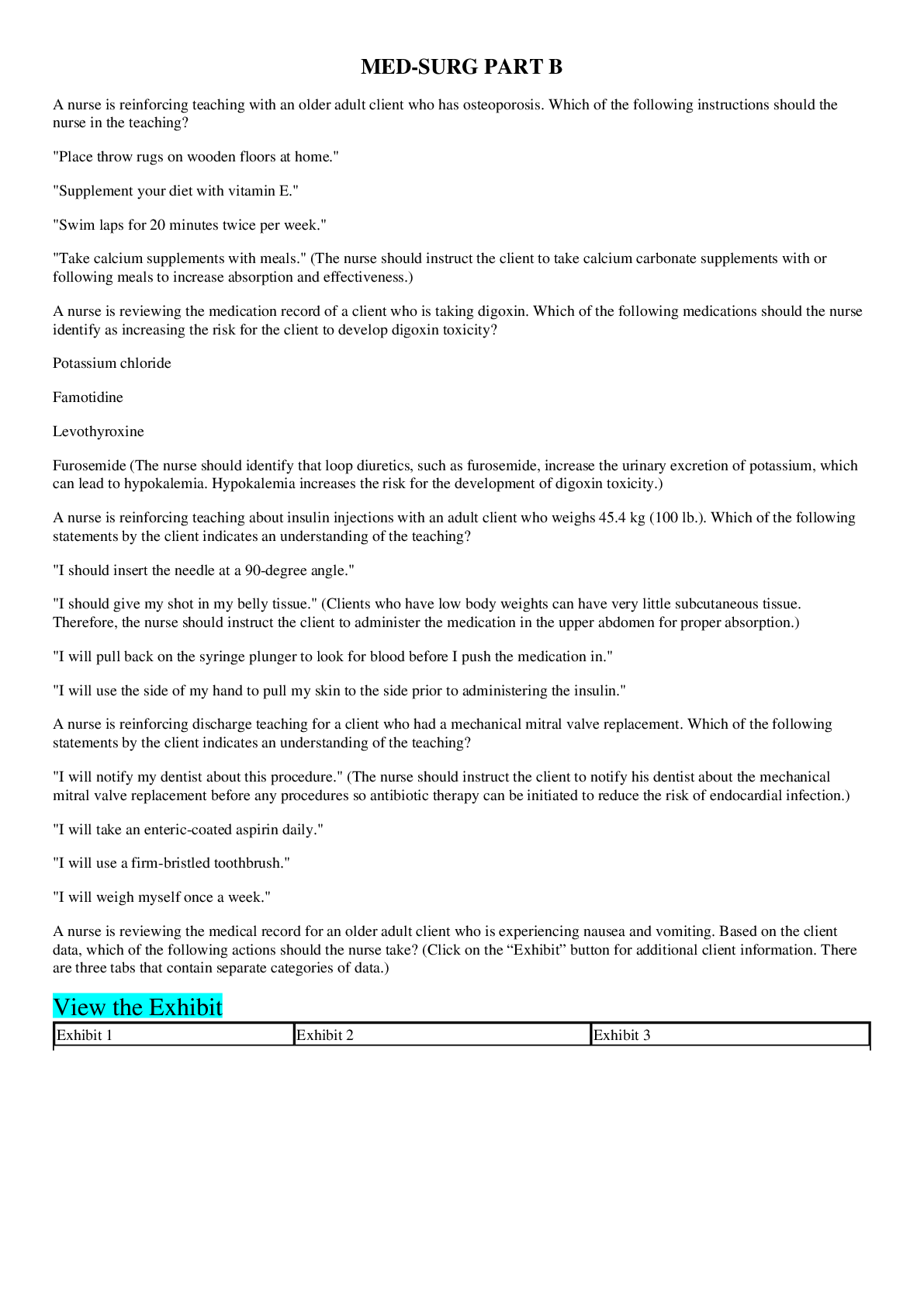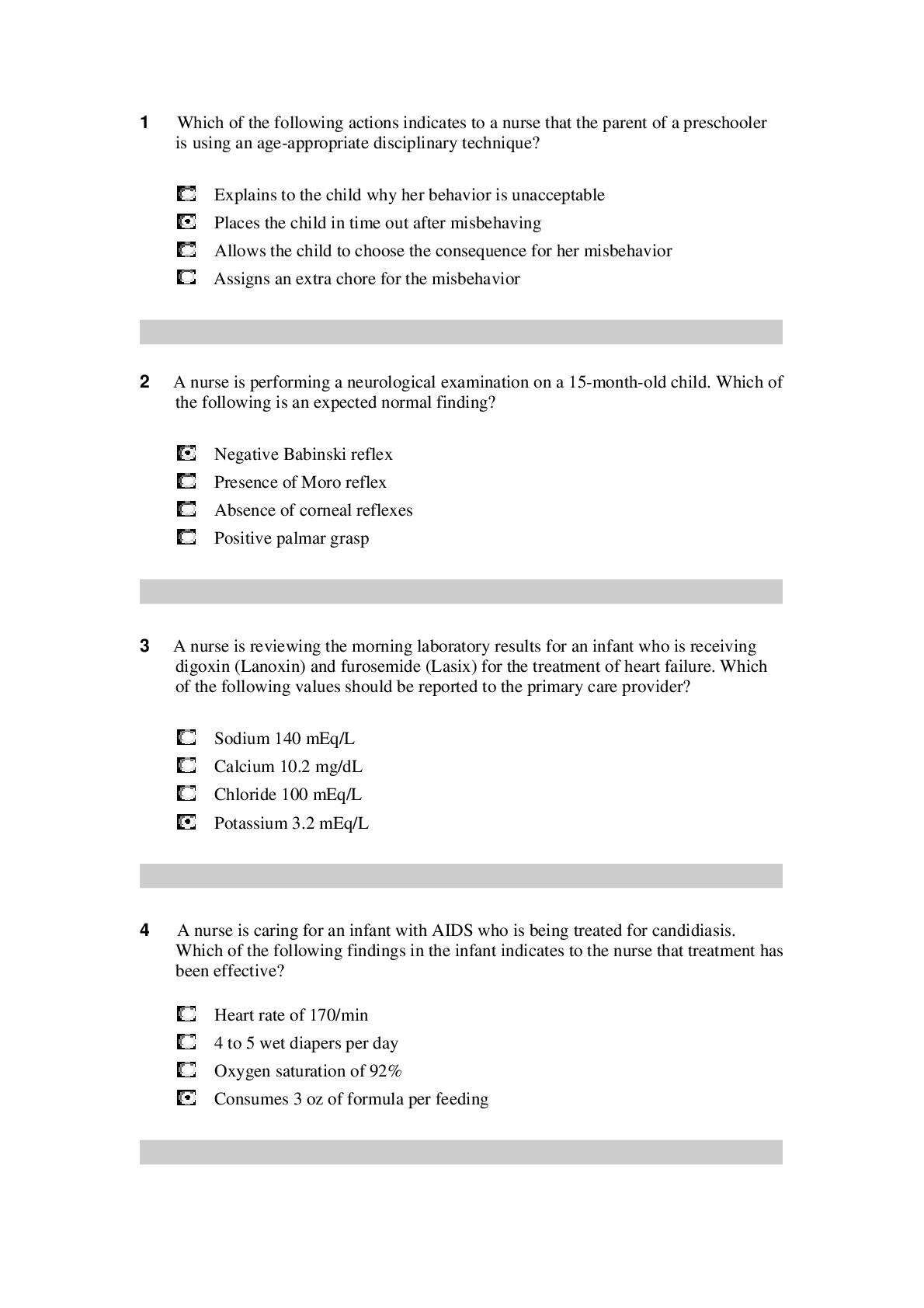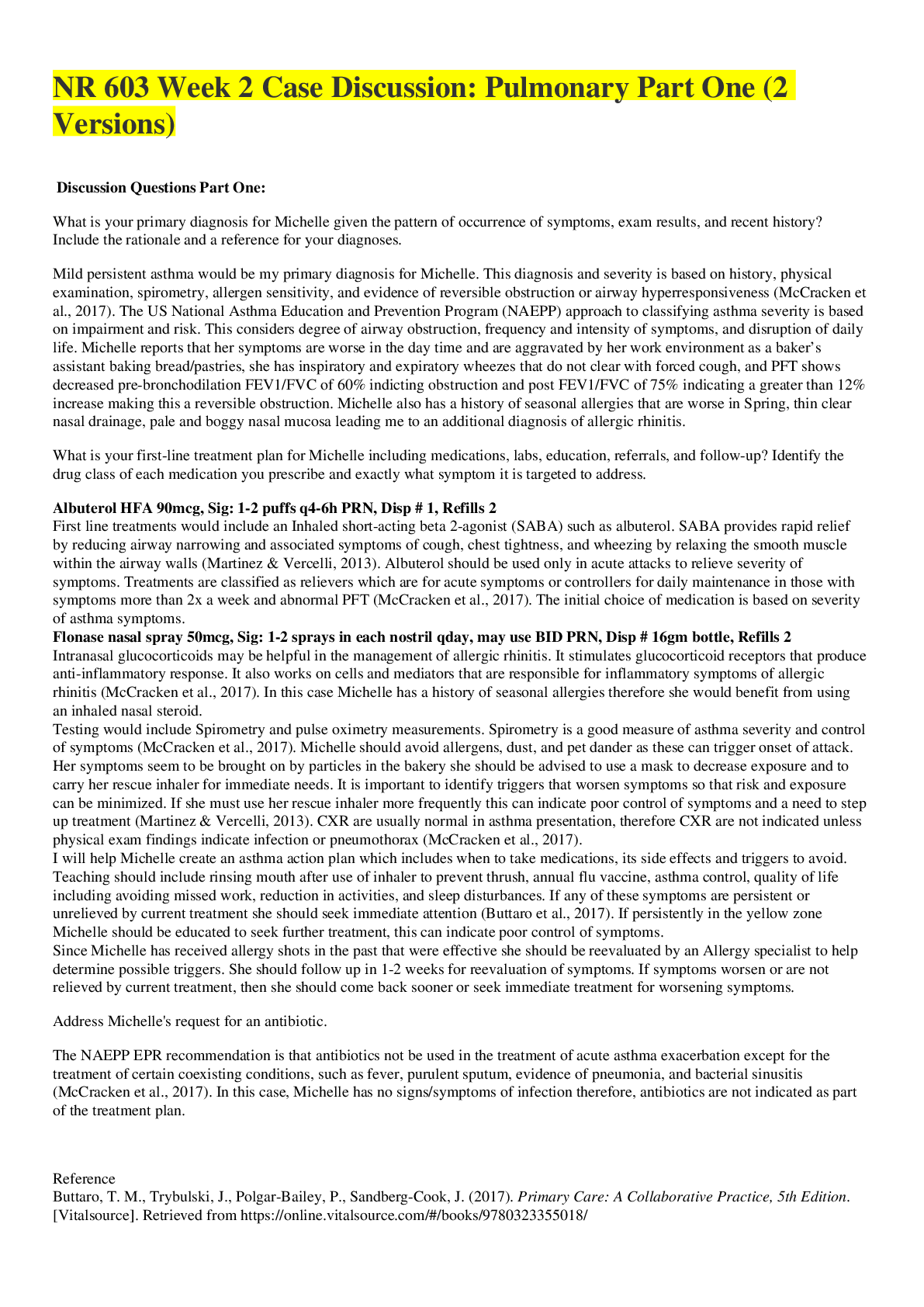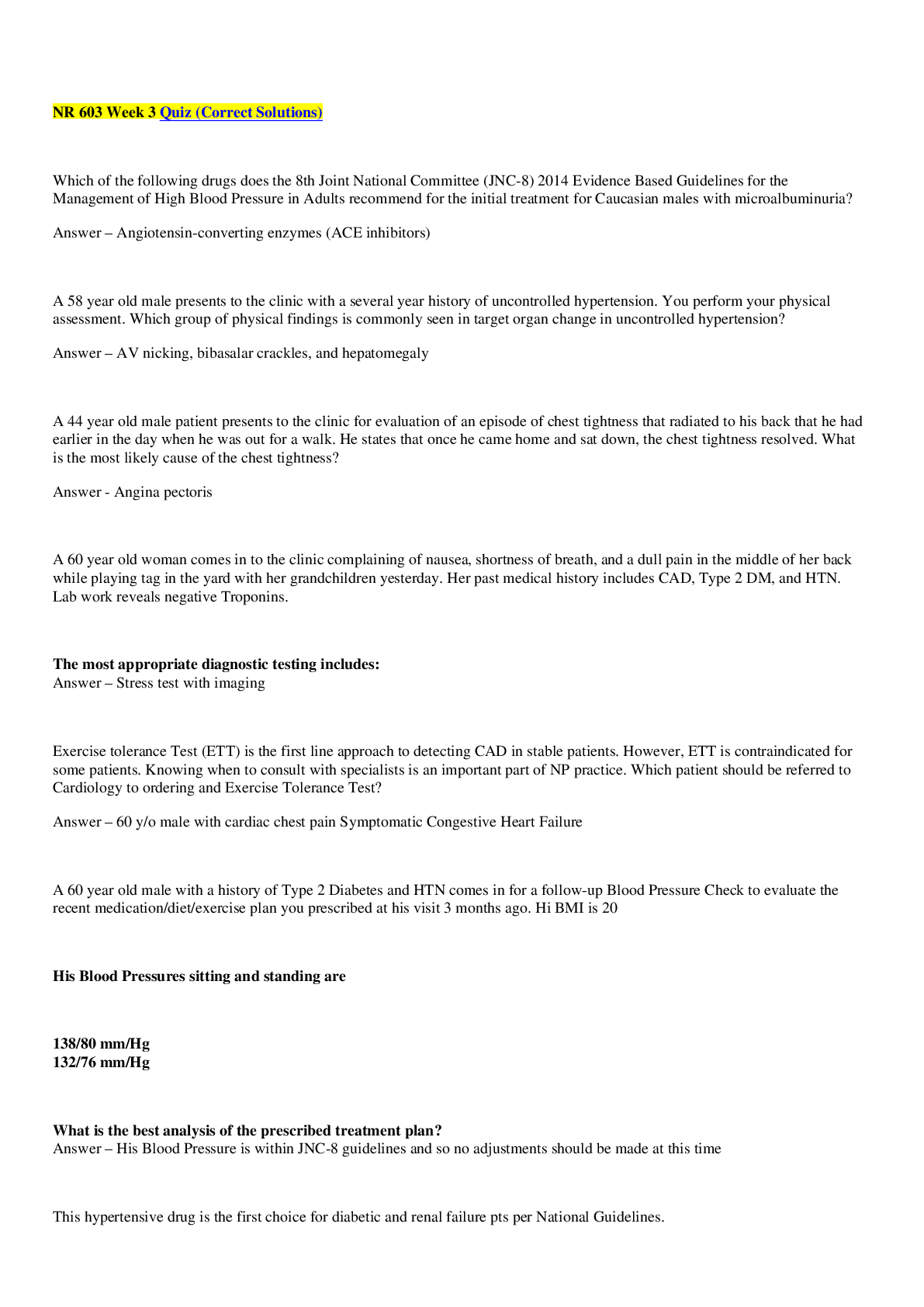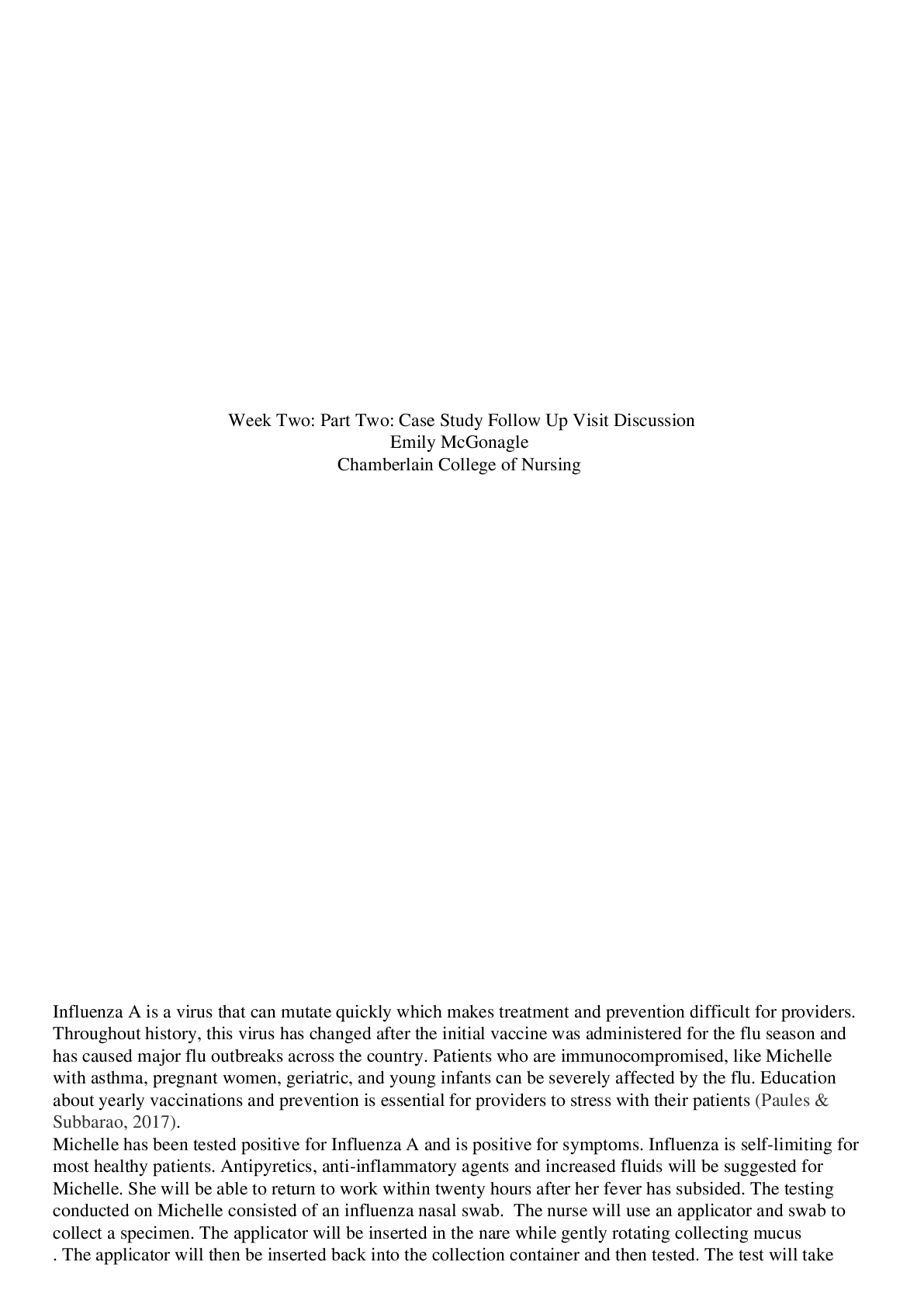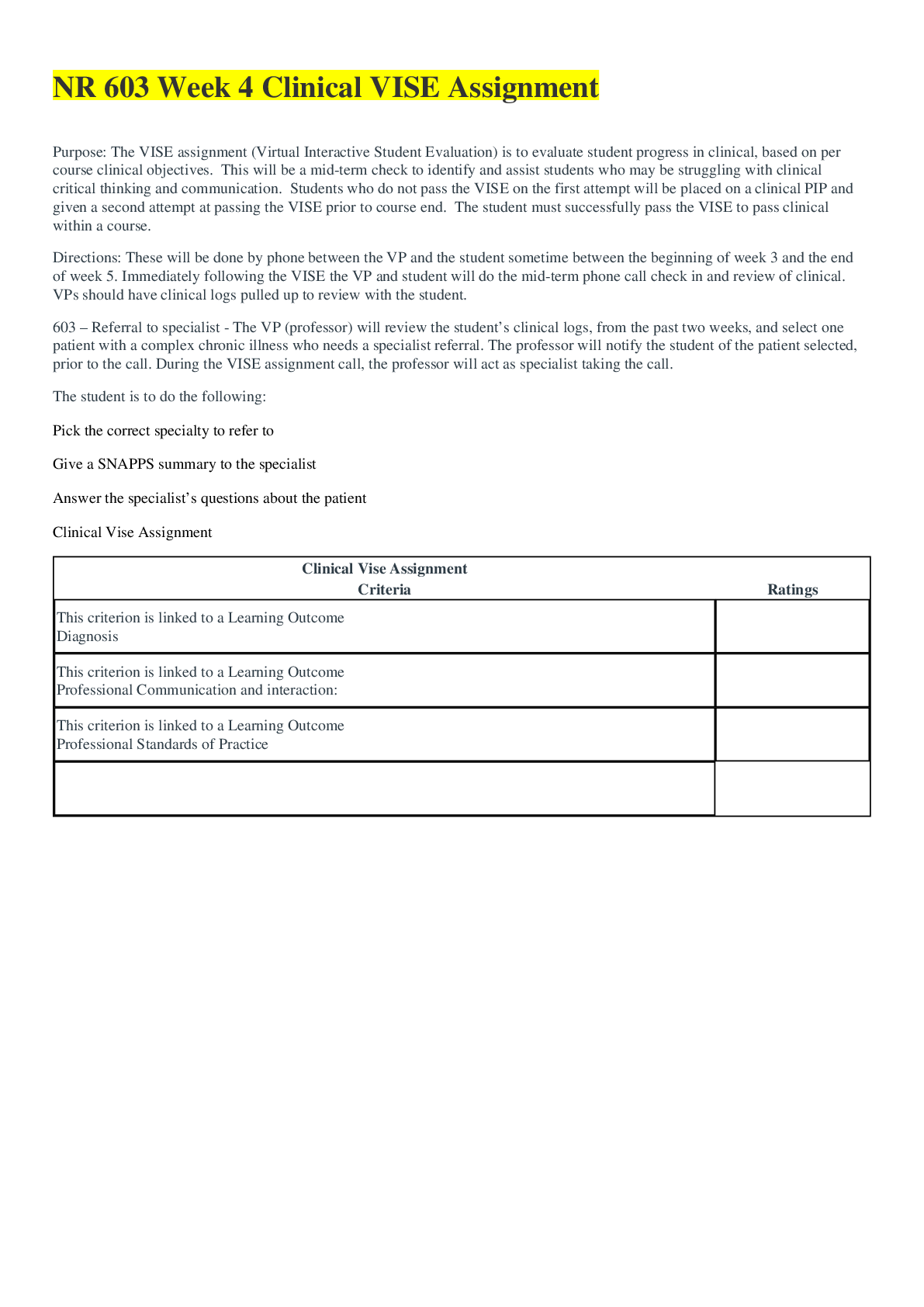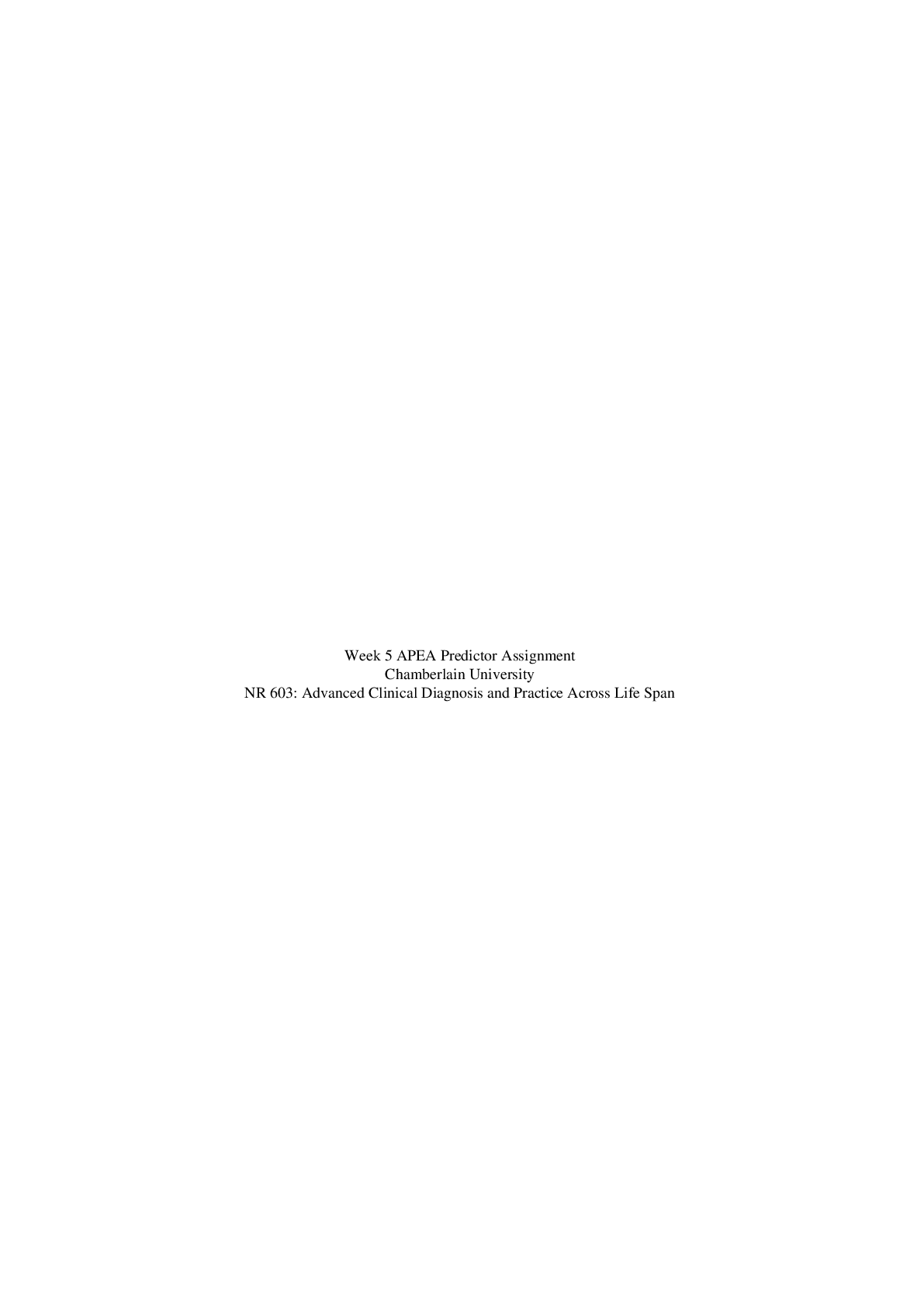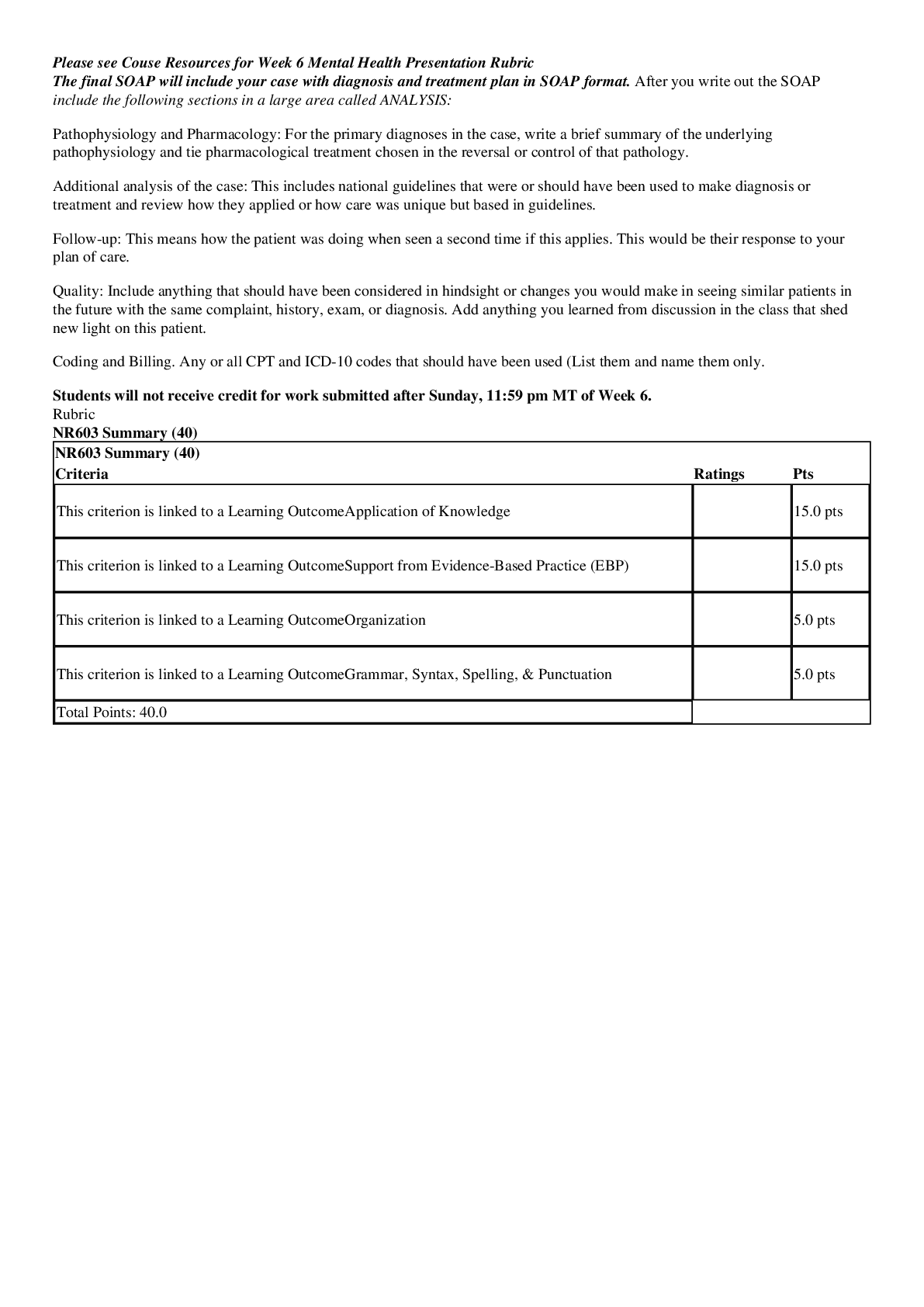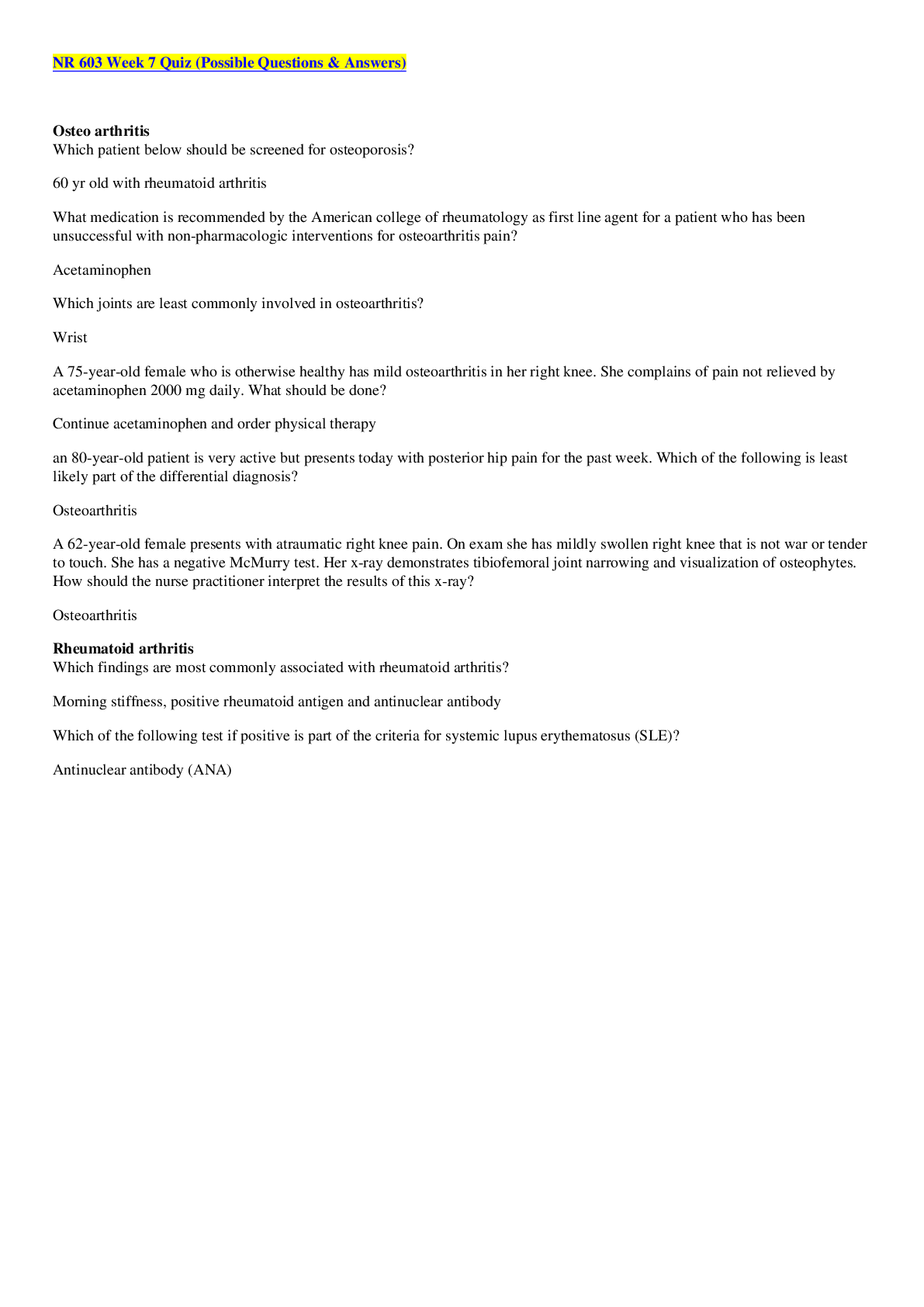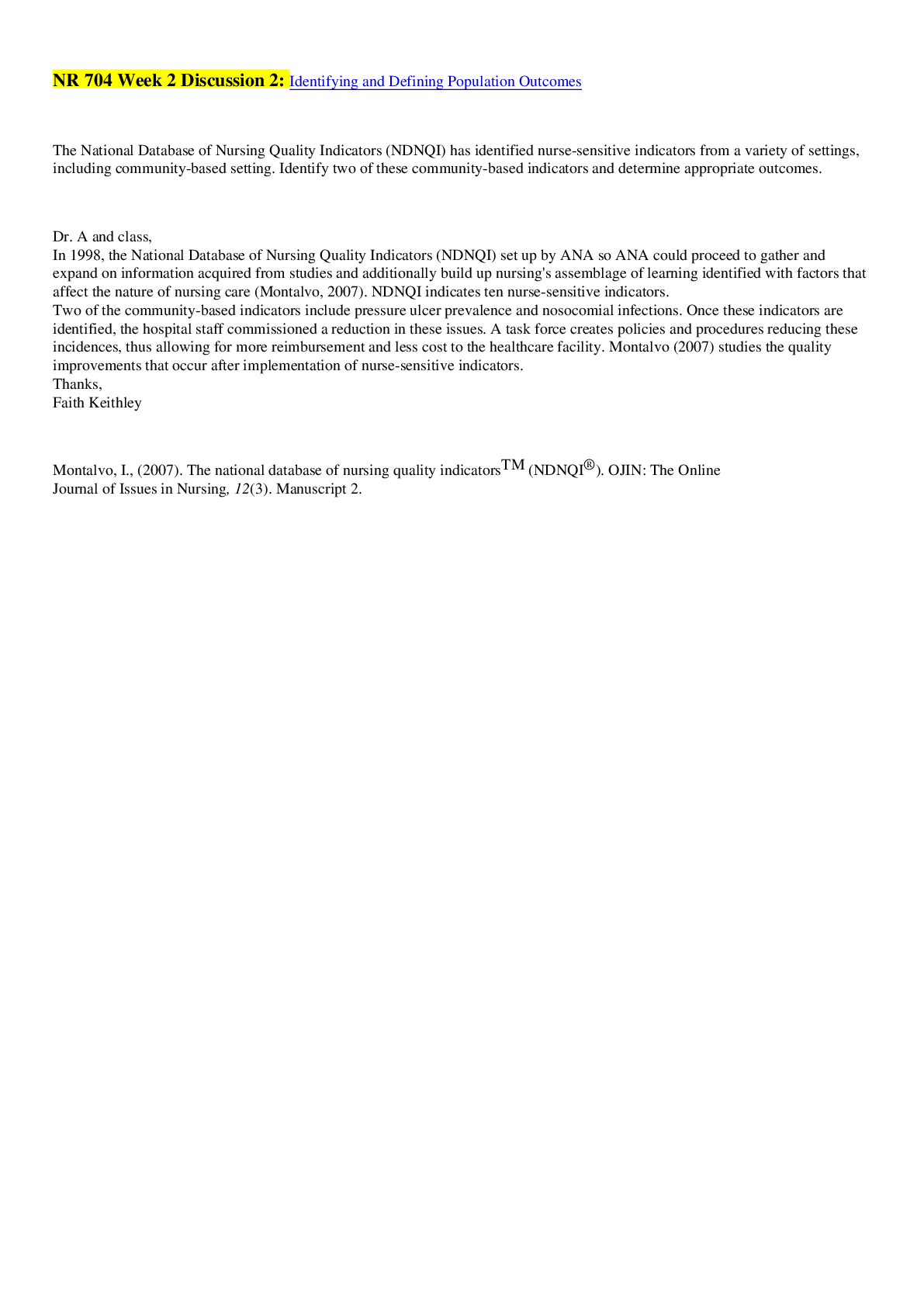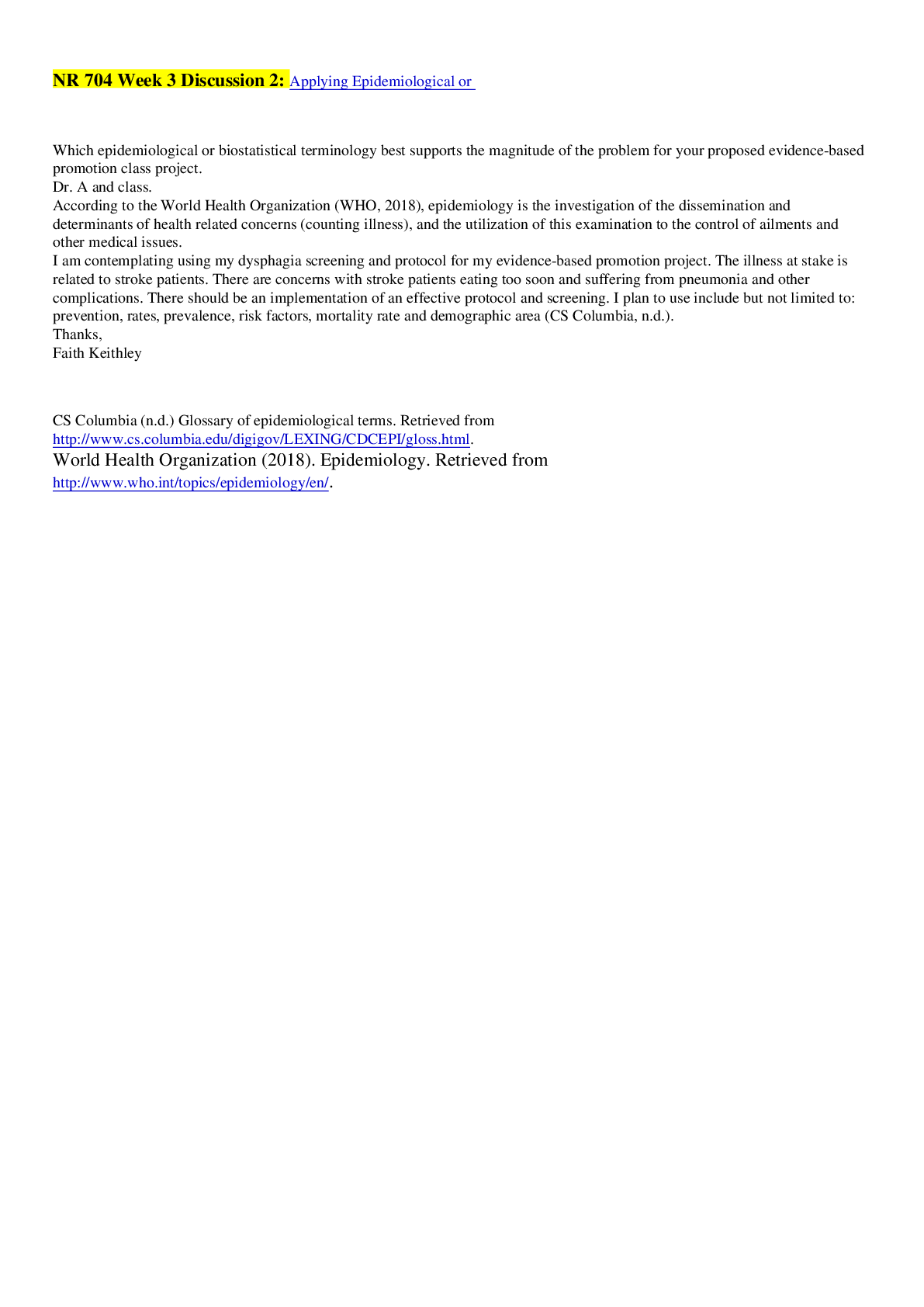Information Technology > STUDY GUIDE > Fundamentals Remediation-Chamberlain College Of Nursing: Graded A (All)
Fundamentals Remediation-Chamberlain College Of Nursing: Graded A
Document Content and Description Below
Fundamentals Remediation A client asks the nurse to explain the different types of advanced directives. What information should be provided regarding living wills, durable power of attorney and DNR... orders? The purpose of advance directives is to communicate a client’s wishes regarding end-of-life care should the client become unable to do so. Different types include, Living wills, Durable power of attorney (DPOA), and Do not resuscitate (DNR). Living Will A living will is a legal document that expresses the client’s wishes regarding medical treatment in the event the client becomes incapacitated and is facing end-of-life issues. Most state laws include provisions that protect health care providers who follow a living will from liability. DPOA A durable power of attorney for health care is a document in which clients designate a health care proxy to make health care decisions for them if they are unable to do so. The proxy may be any competent adult the client chooses. DNR Unless a provider writes a “do not resuscitate” (DNR) or “allow natural death” (AND) prescription in the client’s medical record, the nurse initiates cardiopulmonary resuscitation (CPR) when the client has no pulse or respirations. The provider consults the client and the family prior to administering a DNR or AND A nurse is documenting on the electronic medical record (EMR). How should the nurse ensure client confidentiality during documentation? Only health care team members directly responsible for a client’s care may access that client’s record. Nurses may not share information with other clients or staff not caring for the client. Clients have a right to read and obtain a copy of their medical record. Nurses may not photocopy any part of a medical record except for authorized exchange of documents between facilities and provider’s staff must keep medical records in a secure area to prevent inappropriate access to the information. They may not use public display boards to list client names and diagnoses. Electronic records are password protected. The public may not view them. Staff must use only their own passwords to access information. Nurses must not disclose clients’ information to unauthorized individuals or family members who request it in person or by telephone or e-mail. Many hospitals use a code system to identify those individuals who may receive information about a client. Nurses should ask any individual inquiring about a client’s status for the code and disclose information only when the individual can give the code. Communication about a client should only take place in a private setting where unauthorized individuals cannot overhear it. To adhere to HIPAA regulations, each health care facility has specific policies and procedures to monitor staff adherence, technical protocols, computer privacy, and data safety. Information security protocols include the following: Log off from the computer before leaving the workstation to ensure that others cannot view protected health information on the monitor. Never share a user ID or password with anyone. Never leave a medical record or other printed or written PHI where others can access it. Shred any printed or written client information for reporting or client care after use. Social media precautions include the following: Know the implications of HIPAA before using social networking sites for school or work-related communication. Become familiar with your facility or school’s policies or about using social networking. Do not use or view social networking media in clinical settings. Do not post information about your school, clinical sites, clinical experiences, clients, and other health care staff on social networking sites. What ergonomic principles and body mechanics should the nurse use when lifting a client? Suggested Fundamentals Learning Activity: Ergonomic Principles (Body Mechanics) Use the major muscle groups to prevent back strain, and tighten the abdominal muscles to increase support to the back muscles. Distribute the weight between the large muscles of the arms and legs to decrease the strain on any one-muscle group and avoid strain on smaller muscles. When lifting an object from the floor, flex the hips, knees, and back. Get the object to thigh level, keeping the knees bent and the back straightened. Stand up while holding the object as close as possible to the body, bringing the load to the center of gravity to increase stability and decrease back strain. Use assistive devices whenever possible, and seek assistance whenever it is needed What are signs of an allergic response to latex? What precautions should the nurse take for the client with a latex allergy? Suggested Fundamentals Learning Activity: Medical and Surgical Asepsis Before beginning any task or procedure that requires aseptic technique, health care team members must check for latex allergies. If the client or any member of the team has a latex allergy, the team must use latex-free gloves, equipment, and supplies A nurse is caring for a client following knee arthroplasty. Which of the following prescriptions regarding the continuous passive motion (CPM) machine should be verified with the provider? Suggested Fundamentals Learning Activity: Mobility and Immobility A. Initiate CPM immediately after surgery B. Maintain CPM at all times C. Ensure CPM machine is well padded A nurse is assigned to care for a client with Vancomycin-Resistant Enterococci (VRE). What precautions should be used when caring for this client? Suggested Fundamentals Learning Activity: Standard Precautions Contact precautions protect visitors and caregivers when they are within 3 feet of the client. Against direct client and environmental contact infections (respiratory syncytial virus, shigells, enteric diseases caused by micro-organisms, wound infections, herpes simplex, impetigo, scabies, multidrug-resistant organisms). Contact precautions require: A private room or a room with other clients with the same infection. Gloves and gowns worn by the caregivers and visitors. Disposal of infectious dressing material into a single, nonporous bag without touching the outside of the bag. [Show More]
Last updated: 1 year ago
Preview 1 out of 3 pages
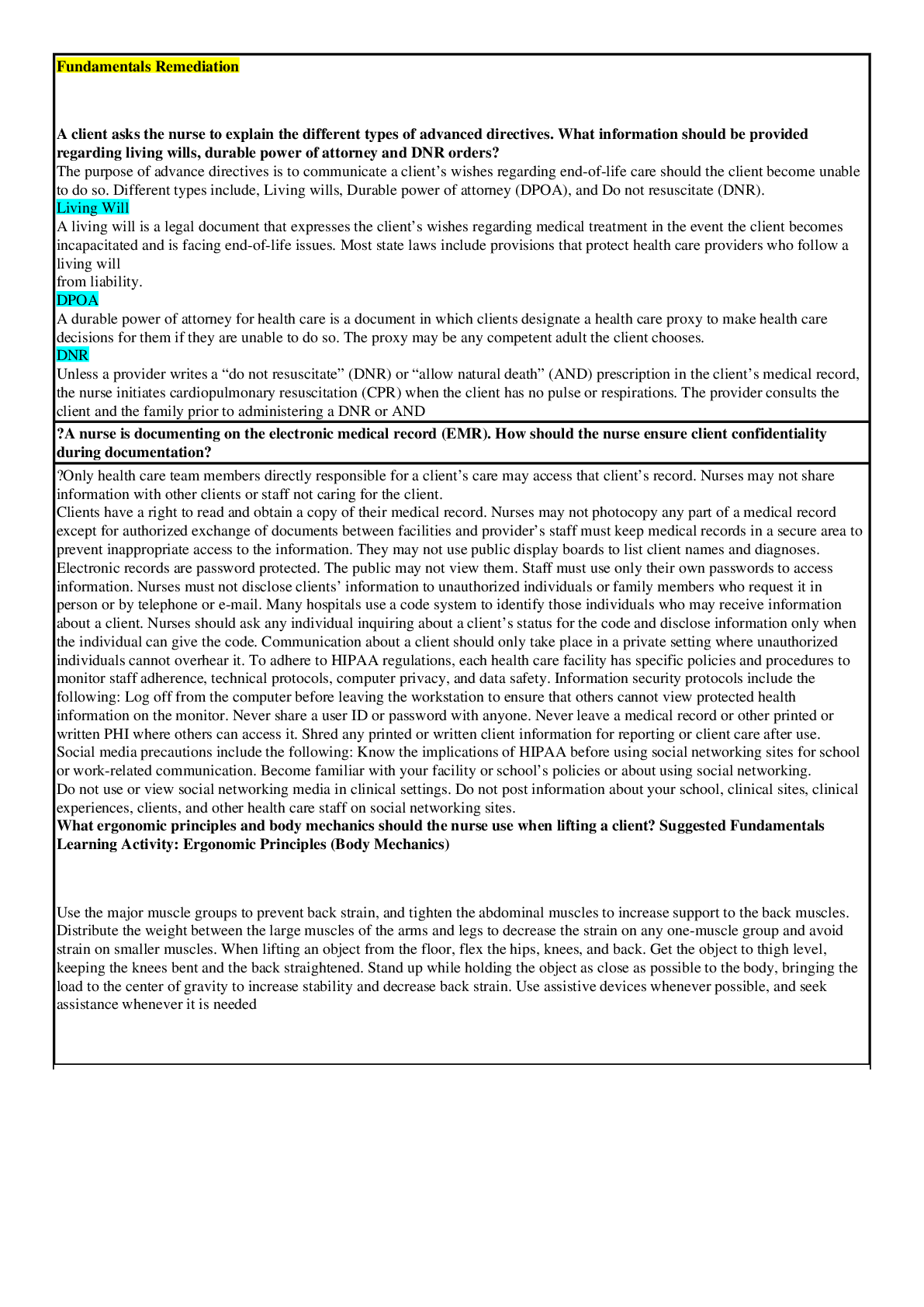
Buy this document to get the full access instantly
Instant Download Access after purchase
Add to cartInstant download
We Accept:

Reviews( 0 )
$10.00
Document information
Connected school, study & course
About the document
Uploaded On
May 19, 2020
Number of pages
3
Written in
Additional information
This document has been written for:
Uploaded
May 19, 2020
Downloads
0
Views
51

